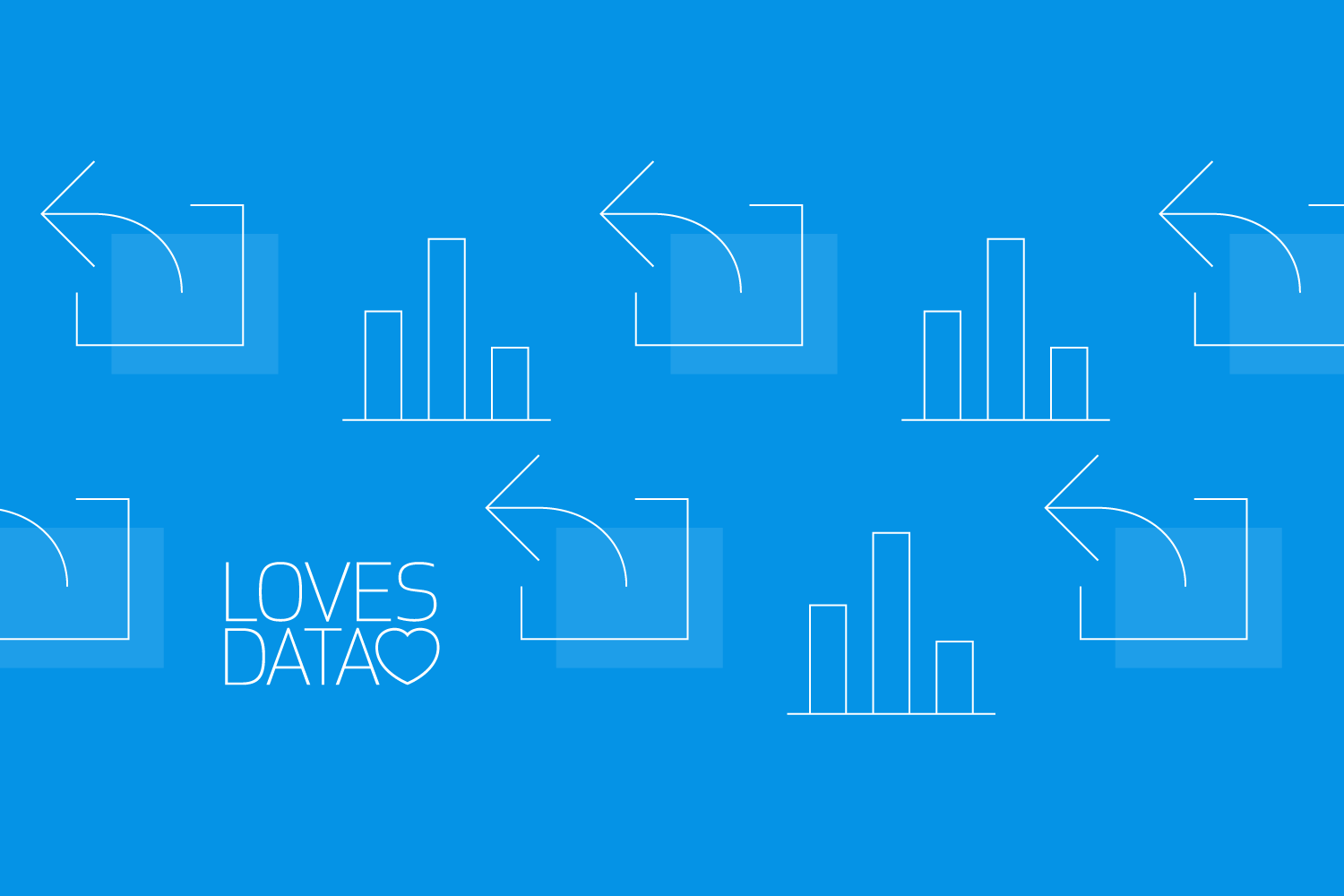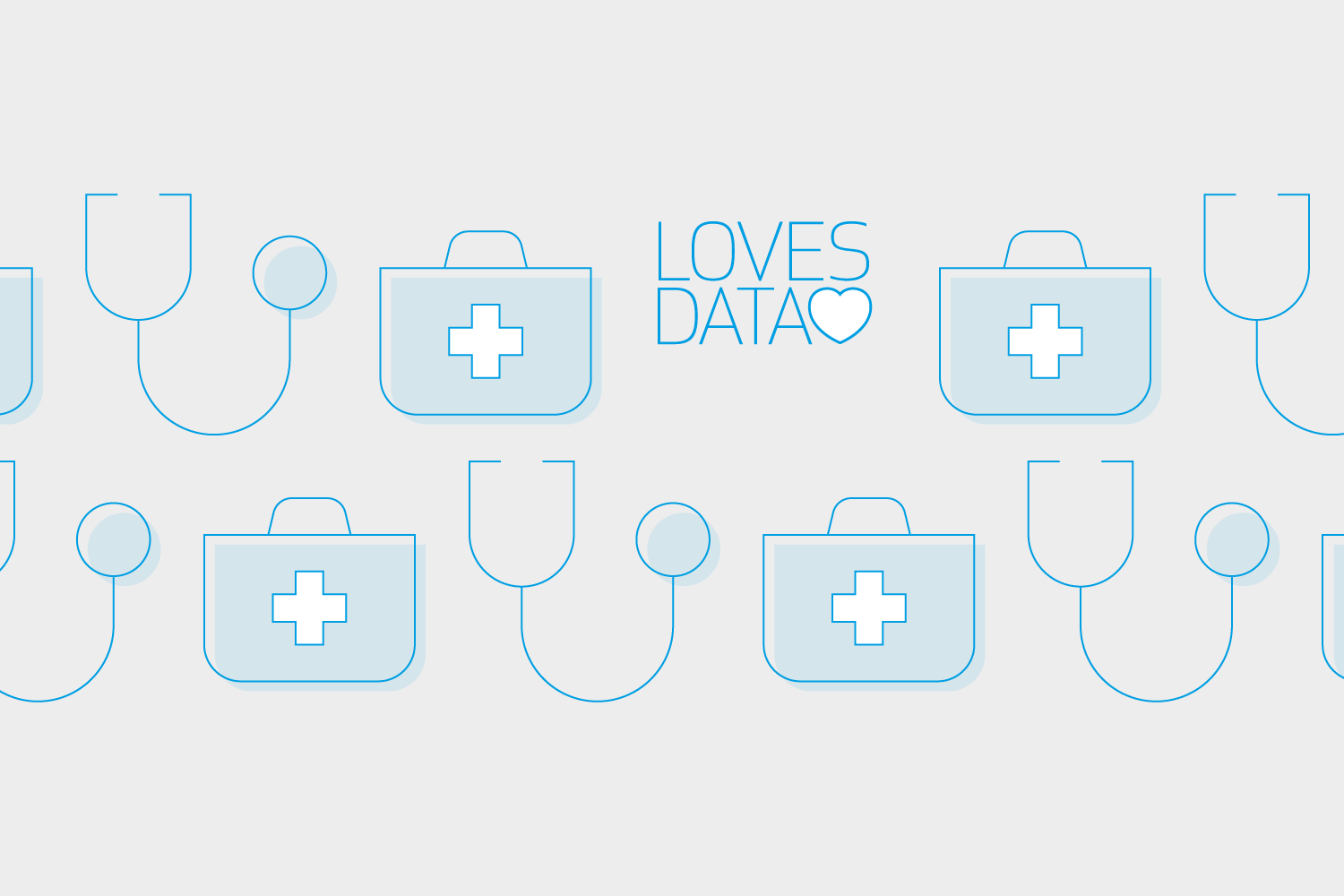Bounce Rate in Google Analytics (Universal Analytics)
Loves Data
Are you using Google Analytics 4 (GA4)? Then check out our updated post covering bounce rate in Google Analytics 4.
Bounce rate is a unique metric within Google Analytics (Universal Analytics). It appears within many of the Google Analytics reports and can helpful when looking at the performance of your content or landing pages. However, as is often the case in any analysis, the secret to understanding the bounce rate metric is context. Taking bounce rate in Google Analytics at face value, or assuming that a high bounce rate indicates low engagement is unlikely to deliver any real insights into the actual performance of your content.
Bounce Rate Definition
Misconceptions about bounce rate start with people having the wrong definition of what it is and how it’s calculated. I've come across various definitions of bounce rate, from “the percentage of people who leave a site” to “the exit rate of the page”.
So what is bounce rate then?
Bounce rate is the percentage of sessions with only one interaction.
Let's take a moment to break this down and look at sessions and interactions. A session occurs when someone lands on your website and the tracking code fires. That person is tracked into Google Analytics. A session can include someone engaging with one page on your website or multiple pages. However, other elements that you're tracking can impact your bounce rate too. These interactions can include:
- A pageview
- An event (unless you define an event as non-interactive)
- A social interaction
- An ecommerce transaction
Coming back to our definition, we are looking at the percentage of sessions where only one of these types of interactions occurred. Typically, a bounce will mean that someone’s session only included the original pageview (their landing page) and no other pages or events on the landing page. So by this definition, a customer who lands on an efficient landing page that provides all the information they need to satisfy their visit could end up being reported as a bounce.
Another important thing to highlight is that by default Google Analytics does not allow you to see how long people spend on the last page someone views. This is because Google Analytics uses the second page to calculate the time for the first page. When we are talking about bounces, there is no second page, so we won’t see how long people spend on the page. You can get more clarity by using events (or triggering another hit) on the page. The other impact on time is that sessions also reset if there is a period of inactivity of 30 minutes or more.
Here is an example that shows a bounce rate of 50%:
This means that the following scenarios will all lead to a bounce (assuming your landing page has no event, social or ecommerce tracking):
- Someone visited your site and left immediately
- Someone visited your site, spent 5 minutes reading an article and left
- Someone visited your site, spent 45 minutes reading an article and then continued to browse the site
- Someone visited your site, read and printed an article, clicked on an email link and sent you an email about how useful it was
On the other hand, the following scenarios will NOT lead to a bounce:
- Someone landed on a page that included the Google Analytics tracking code and redirects to another page, then left immediately
- Someone landed on a page that triggers an event 5 seconds later that the page has loaded, then left immediately
- Someone landed on a page where the same Google Analytics tracking code was loaded twice
There are several reasons why bounce rate is important, these include:
- Bounce rate can be used as a ranking factor on the Google search engine. Based on the results of a study on Google search results, bounce rate has a close relation to Google rankings.
- Bounce rate may be used as an indicator of conversions. A bounce on your website is a clear pointer that the user did not convert. This can help you find a way to minimize bounce rates, and in turn increase the conversion rates.
- A high bounce rate can be a measure of user engagement. Assessing the bounce rate on your website gives you an idea of whether certain pages on your site have issues with page layout, user experience, content or copywriting.
The important takeaway is that your website architecture and any Google Analytics customizations can affect the bounce rate you see in your reports. It is essential to set up your Google Analytics implementation to reflect your business objectives, so that bounce rate matches what you expect and consider a reasonable bounce rate for your industry and business.
Bounce Rate FAQs
Should I obsess about the site-wide bounce rate as a KPI?
No. A site-wide bounce rate is an average that hides the detail. Focusing on the overall bounce rate would be a little like planning a trip to Russia based on the average temperature for the year. If you pack your suitcase based on an overall average of 15 degrees Celsius (59 Fahrenheit), then you will be in for a bit of a shock if you arrive in December! The same applies to bounce rate; you need to look at individual pages or sections of your website, instead of the bounce rate for your whole website.
What is a good bounce rate in Google Analytics?
Once you understand how bounce rate is calculated, it becomes clear how misleading it can sometimes be to compare different websites. Bounce rate depends (amongst other things) on your implementation, website architecture, industry, page type, and marketing channels. These all need to be considered for proper context. Typically a website where people complete actions on a single page, like a blog, will have a higher bounce rate on average, so you can expect anywhere from 70% to 90%. For a lead generation or ecommerce site, you want to aim for a lower bounce rate, typically below 50%.
What is the difference between bounce rate and exit rate in Google Analytics?
Both bounce rate and exit rate are metrics that indicate when and where visitors leave your website. Many people confuse them, but they are not the same metric. The difference is that a bounce will be reported only when there is a single-page session while exit rate reports for both single-page and multiple page sessions. An example is when a user visits your website homepage, spends time on the page and exits without interacting further or clicking through anything. This will contribute to the bounce rate, attributed to the homepage. On the other hand, if the user visits your website homepage, clicks through to your product page, then goes to the category page and leaves the site, the exit rate will be affected. The 'exit' in this case, will be attributed to the category page. While not every exit is a bounce, every bounce is an exit.
What does a 0% bounce rate mean?
A 0% bounce rate on Google Analytics may mean that there were no users who arrived at that page from an external source of traffic. It could also mean that all the users who visited that page went on to navigate other pages on your website. This is however, generally not the case. It could be as a result of technical problems occurring on your page. Some of the reasons why a page will have a 0% bounce rate is when there are duplicate tags, third party plugins or redirect issues that are affecting the Google Analytics tracking code.
Does a high bounce rate mean that my website is not delivering what people expect?
Bounce rate is the percentage of single page-sessions on your website. This means that a user leaves your site from the landing page and does not navigate further. High bounce rate can be a red flag, but it also heavily depends on the specific page. This means that if you do not interpret bounce rate in the correct way, it can be misleading. A high bounce rate should not always be alarming, depending on your industry and niche. If it’s a single page where people are getting all the information they need without having to navigate, a successful session will be reported as a bounce. For instance, publishing websites, news websites and blogs have an average bounce rate of 70% or higher. This does not necessarily mean that the site is not delivering what people expect. It could mean that the user wanted specific information that they obtained from your landing page, after which they left the page.
My bounce rate in Google Analytics has increased. Should I be worried?
The first thing to do is to find the reason for the increase. Is this increase attributed to a specific marketing channel (for example starting to get more social media traffic)? As a business grows, it will typically attract more people outside your target demographic – more casual visitors who will drive the bounce rate up. By finding the page, marketing channel, device type, and any other factors responsible for the increase in bounce rate, you’ll be able to tell if this is a genuine issue or just natural business growth contributing to a change in averages.




Comments